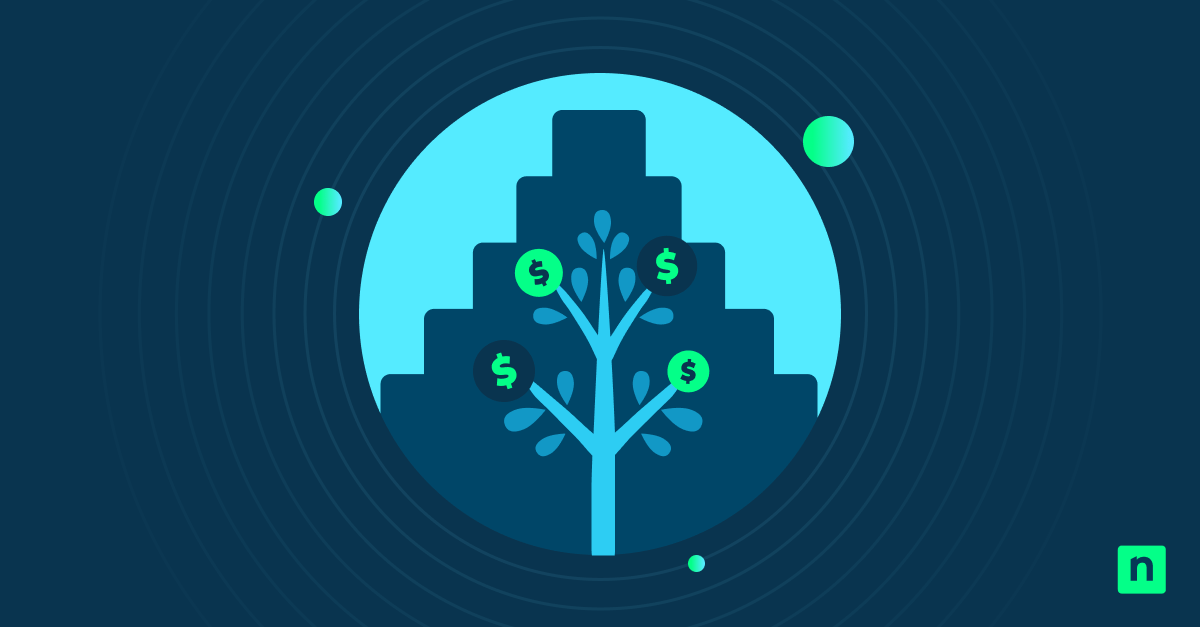Cloud computing, which is the delivery of computing services such as servers, storage, databases, networking, software, analytics, intelligence, and more over the internet, has completely transformed the technology landscape in what seems like a heartbeat.
Cloud computing provides an alternative to the traditional data center. In a standard data center, everything needs to be managed – the premises, power, cooling, hardware, virtualization technology, installing the operating system and any applications, setting up the networking, routing and network security, and data storage. The consumer is then responsible for the full lifecycle – all the maintenance and eventual decommissioning.
With a cloud computing stack, a third-party cloud vendor is responsible for data center operations, providing a wide variety of servers, software, storage, and service options.
What is the cloud computing stack?
The cloud computing stack, often referred to as the cloud service model, is a conceptual framework that categorizes managed cloud services into different layers based on the types of resources offered.
The three primary layers of the cloud computing stack are:
- Infrastructure as a Service (IaaS): Think of IaaS as the rental of traditional infrastructure elements like servers, storage, networks, operating systems, and more from a cloud service vendor. The client can create virtual machines running Windows or Linux and install anything they need on them as required. Using IaaS gives the customer freedom from hardware maintenance and hypervisor management, but everything beyond that is managed by the customer. The customer is in total control of systems running on managed infrastructure. Azure VMs would be an example of IaaS.
- Platform as a Service (PaaS): The PaaS family of services provides on-demand environments for developing, testing, delivering, and managing software applications. The customer is responsible for applications and services, and the PaaS vendor provides the ability to deploy and run them. PaaS lacks the total customer control of IaaS, but has the advantage of reducing customer responsibility to the application tier, with everything else managed by the cloud services vendor. Azure SQL would be an example of a PaaS service.
- Software as a Service (SaaS): SaaS covers the centrally hosted and managed software services provided directly to end-users. SaaS delivers software over the internet, on-demand, and typically on a subscription basis. Microsoft One Drive, Dropbox, WordPress, Office 365, and Amazon Kindle are examples of SaaS.
The cloud service model provides several benefits in the shape of increased flexibility, scalability, and cost-effectiveness. The services in each layer of the cloud computing stack can be combined to provide organizations with technology options that fit their operational and business requirements.
Below, we take a closer look at the layers of the cloud computing stack.
Infrastructure as a Service (IaaS)
Infrastructure as a Service (IaaS) offers services one might traditionally associate with physical data centers. Servers become virtualized computing resources, including virtual machines, SANs, and disk arrays, which become storage services, and networking infrastructure is provisioned on-demand. With IaaS, organizations can provision, manage, and scale resources dynamically, paying only for what they use.
Key components and services in IaaS
- Virtual Machines (VMs): Virtualized instances of computing resources, such as CPU, memory, and storage, that can be provisioned and managed through a customer portal, command-line, or API. Users can choose from various VM configurations based on their performance and scalability requirements.
- Storage services: Cloud storage solutions, such as object storage, block storage, and file storage, provide scalable and durable storage options for storing and accessing data in the cloud. Storage services offer redundancy, encryption, and data lifecycle management.
- Networking infrastructure: Cloud networking services enable organizations to create virtual networks, subnets, and load balancers to connect their resources securely and efficiently. Features like virtual private clouds (VPCs), VPN connections, and network security groups help organizations build and manage complex network architectures in the cloud.
Use cases and benefits of IaaS
- Infrastructure flexibility: IaaS allows organizations to scale resources up or down based on demand, enabling them to handle fluctuations in workload in a cost-effective way.
- Disaster recovery and business continuity: By decoupling infrastructure from the underlying physical hardware, disaster recovery position improves. Business continuity planning to ensure data resilience and minimal downtime in the event of a disaster event becomes easier, with the opportunity to replace a failed system with a fresh replacement near-instantly.
- Cost efficiency: Using IaaS enables organizations to avoid the costs associated with purchasing and maintaining physical hardware. The pay-as-you-go payment model helps organizations optimize IT spending and allocate resources more efficiently.
Platform as a Service (PaaS)
Platform as a Service (PaaS) cloud solutions can be thought of as cloud service-managed IaaS, providing platforms customers can consume without considering the underlying infrastructure. Tools, frameworks, and runtime environments are provided that support the build, test, deployment, and management of applications.
Components and services provided by PaaS platforms
- Development tools: PaaS platforms offer a range of development tools and services, which help to optimize the application development lifecycle.
- Middleware services: Cloud PaaS offerings provide core services such as databases, message queues, caching, and identity management to support application services. Adopting PaaS provides the supporting framework that an application needs to function without the administrative overhead.
- Managed application platforms: PaaS offerings also include application instances, containers, and serverless computing platforms. Such environments provide scalable and fault-tolerant platforms for application deployment, enabling organizations to concentrate on their applications without the overhead of infrastructure management.
How PaaS simplifies application development and deployment
- Rapid development: By providing developers with pre-built components and templates, PaaS services reduce the time and effort required to get applications through the development lifecycle.
- Scalability and elasticity: PaaS platforms are not constrained by IaaS limitations and are able to scale on demand. Organizations can use PaaS platforms to address spikes in user activity, offering a consistent user experience without any support overhead.
- DevOps integration: PaaS platforms provide continuous integration and continuous delivery (CI/CD) pipelines and deployment automation tools. This can improve collaboration between development and operations teams, improving agility, which reduces costs.
Software as a Service (SaaS)
Software as a Service (SaaS) describes the delivery of fully managed software applications over the internet, usually on a subscription basis. SaaS applications are hosted and managed by cloud service providers, allowing users to access them via web browsers or APIs without the need for installation or maintenance.
Examples of popular SaaS applications
- Microsoft Office 365: A fully managed version of the popular productivity suite, which can be accessed via a web browser as well as the more traditional client installed on an end-user device. Monthly or annual subscription models available, as well as integration with other Microsoft applications and services.
- HubSpot: This popular Customer Relationship Management (CRM) application provides tools for managing customer relationships, sales pipelines, and marketing campaigns.
- Slack: This enterprise communications tool has revolutionized team collaboration and information sharing. Channel communications over a web browser or native application reduce the reliance on underlying operating systems, making deployment easier in a multi-device environment.
Advantages of using SaaS
- Accessibility and convenience: SaaS applications are accessible from any device with an internet connection, removing the overhead associated with deployment and support. Users can work remotely from anywhere in the world.
- Scalability and flexibility: The per-user pay-as-go-go model usually operates month to month, making it easy for organizations to add and remove users as required. This flexibility makes SaaS ideal for businesses of all sizes.
- Cost savings: Using SaaS removes the overhead of infrastructure hardware, software, and licensing, as well as ongoing support costs. Organizations pay a standard monthly or annual subscription fee, reducing costs.
Further considerations
- Data security and privacy: While using SaaS applications is convenient and cost-effective, any sensitive data processed may raise concerns about data security, privacy, and compliance. It is important to evaluate the types of data that will be stored and processed and assess the suitability of the SaaS vendor to ensure data protection and regulatory compliance.
- Vendor lock-in: Migrating data and applications between SaaS providers can be challenging and costly, resulting in portability issues. Organizations should carefully consider the long-term implications of vendor lock-in, assess the available options to ensure their technical freedom, and mitigate risks.
Deployment models in cloud computing
There are numerous ways to consume cloud technologies, with public, private, hybrid, and multi-cloud deployment models available to suit an organization’s requirements:
- Public cloud services are owned and operated by a third-party cloud service provider. They deliver computing resources such as servers, software, and storage. Providing a virtual data center over the internet.
- Private cloud services are those built by organizations for their exclusive use. A private cloud may be physically located in company-operated premises or hosted by a third party. Private clouds typically consist of server and storage infrastructure, upon which many servers and services are virtualized. This is typically a much more costly option.
- A hybrid cloud is a combination of public cloud services and private cloud services, linked together by technology that enables applications to communicate between them. Hybrid cloud provides flexibility and more deployment options to the business.
- A multi-cloud deployment model uses multiple cloud providers to host services. Multi-cloud architectures provide redundancy and resilience, reducing the risk of vendor lock-in, as well as improving high availability and performance.
Factors influencing the choice of deployment model
There are many factors that influence the selection of cloud deployment methodology, including:
- Security and compliance requirements: Organizations must consider security, compliance, and regulatory requirements when choosing a deployment model. More sensitive systems and datasets may be better suited to private cloud deployments that offer maximum control and segregation rather than public cloud models with shared infrastructure and public internet connectivity. Organizations in regulated industries may opt for private or hybrid clouds to maintain greater control over security, compliance, and data governance.
- Performance and scalability needs: Public cloud services offer boundless resources, unlimited scalability, and global accessibility, making them suitable for high-demand applications. Private clouds are better suited to mission-critical services and provide predictable performance thanks to dedicated resources.
- Cost considerations: Public clouds typically follow a pay-as-you-go pricing model based on resource consumption, while private clouds involve significant upfront investments and ongoing operational expenses. Private cloud may offer a more attractive ROI over time but result in a less consistent cost model than public cloud.
Hybrid and multi-cloud strategies for scalability and redundancy
Organizations may consider a hybrid cloud deployment approach to reap the benefits of both public and private clouds while addressing specific business needs. A hybrid cloud approach permits greater control over sensitive workloads and data by adopting private cloud while taking advantage of the scalability, flexibility, and cost efficiencies of public cloud for consumer systems.
A multi-cloud strategy involves using multiple cloud providers to distribute workloads across different cloud environments. Organizations can choose the best services from multiple providers based on performance, features, and cost. Multi-cloud architectures provide redundancy, resilience, and vendor diversity, reducing the risk of downtime and service outages.
Best practices for cloud computing stack implementation
Plan and design a cloud architecture
- Define clear objectives and requirements: Before adopting a cloud deployment strategy, organizations should establish their requirements and success criteria to ensure the technology choices made are aligned with business objectives.
- Assess existing infrastructure and applications: Ensure the existing infrastructure, applications, and workloads are appropriate candidates for migration to the cloud, given any data sensitivity, dependencies, and integration requirements.
Optimize cost and resource utilization
- Right-size resources: Assess the current storage and compute requirements of your workloads and ensure their cloud equivalents are sized accordingly to ensure cost efficiency.
- Implement cost management tools: Cloud service providers offer in-built tools to help track and optimize costs based on consumption. Use these tools to analyze cost trends and identify optimization opportunities.
Ensure security and data protection
- Implement defense-in-depth: Use cloud-based tools to establish a layered security approach that combines preventive, detective, and responsive controls to protect against security threats and vulnerabilities.
- Encrypt sensitive data: Encrypt data at rest and in transit using strong encryption and ensure encryption keys are appropriately managed. Platform-managed keys ensure data confidentiality and integrity.
- Establish access controls: Implement robust identity and access management controls, including role-based access control (RBAC). Use least privilege principles to ensure only those who need access have it, and enforce multi-factor authentication (MFA) to prevent unauthorized access.
Optimize monitoring and performance
- Monitor cloud performance: Implement monitoring and logging solutions to track key performance metrics, detect anomalies, and troubleshoot issues.
- Conduct regular performance tuning: Fine-tune configuration based on performance analysis, workload demands, and user feedback to optimize performance and cost-effectiveness.
Harness the cloud for business growth
As organizations continue to embrace cloud technologies, choosing the right cloud computing stack becomes increasingly critical. Selecting the right combination of cloud services and deployment models requires careful consideration of factors such as workload requirements, cost, security, compliance, and scalability.
By staying informed of the latest developments and best practices in cloud computing, organizations can harness the full potential of the cloud to drive business growth, enhance customer experiences, and unlock new opportunities for innovation.
Successful adoption of cloud technologies relies on a robust endpoint security policy, and embracing NinjaOne Endpoint Management can ensure client devices are compliant.








